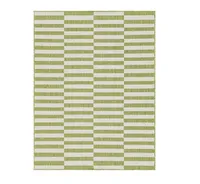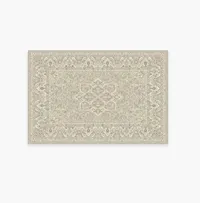Should you put a rug under the dining table? We settle the debate that divides designers
Is a rug an anchoring piece of design under a dining table, or inappropriate use of furniture? We ask designers to settle the debate

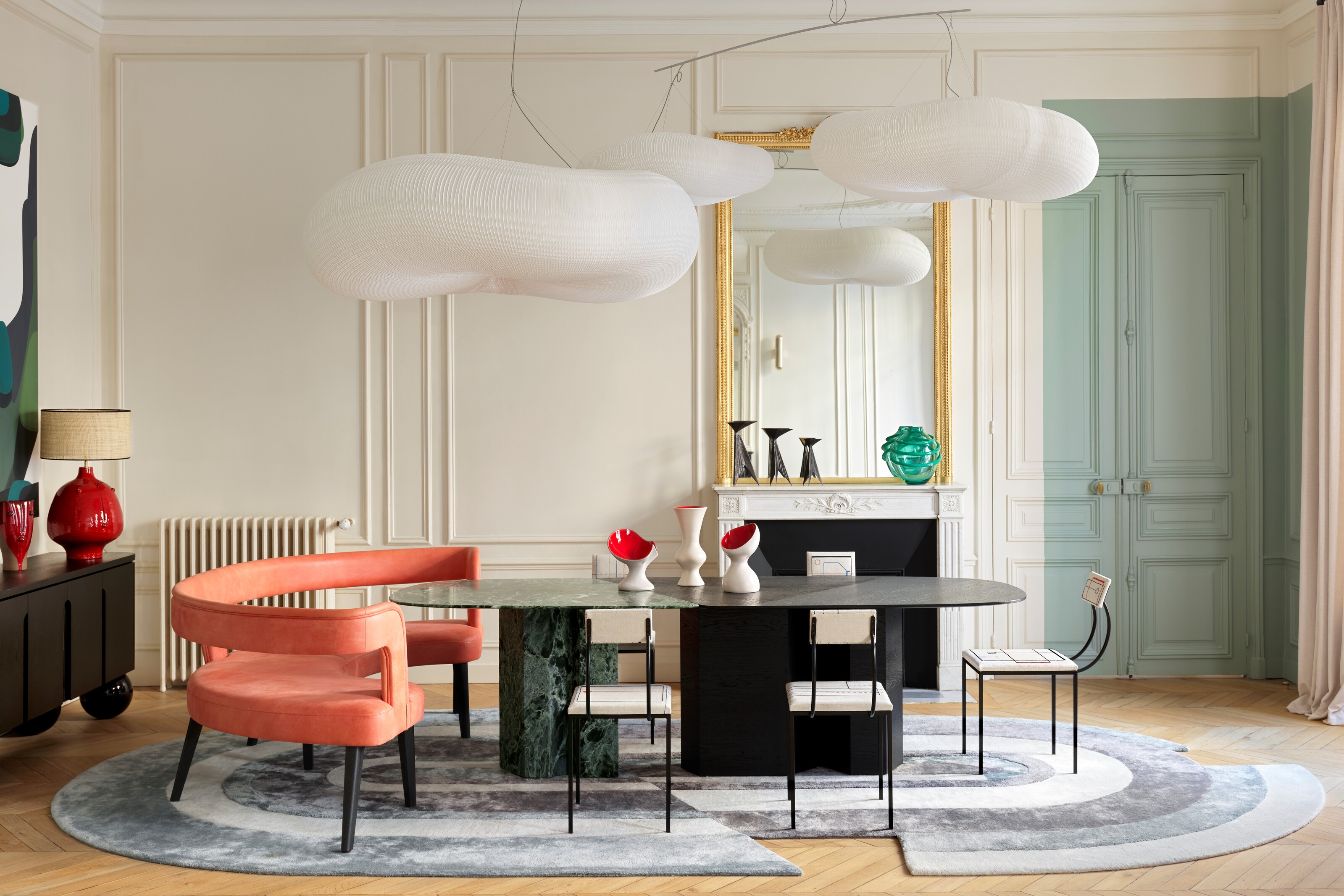
Does a rug under the dining table work? It's a question that divides designers as they seek to balance substance and style in this part of the home. On the one hand, a rug under the dining table can create a little more luxury in a dining room and add softness and texture to a space typically characterized by hard surfaces and cold flooring. 'I'm actually ordering a rug for my dining room right now,' says French textile designer, Pierre Frey. 'I would definitely suggest putting a rug under a dining table as it creates an atmosphere and ambiance in a room.'
On the other hand, the dining table is a practical piece of furniture, the scene of dining and socializing, and therefore comes with the potential for spillages and damage from falling food and scraping chairs over the years. So how do you get the balance right? And if you do go for a rug under the dining table, what is the best material to use, and what shape works? We speak to the experts for their opinion on this dining room dilemma.
What are the pros of putting a rug under a dining table?
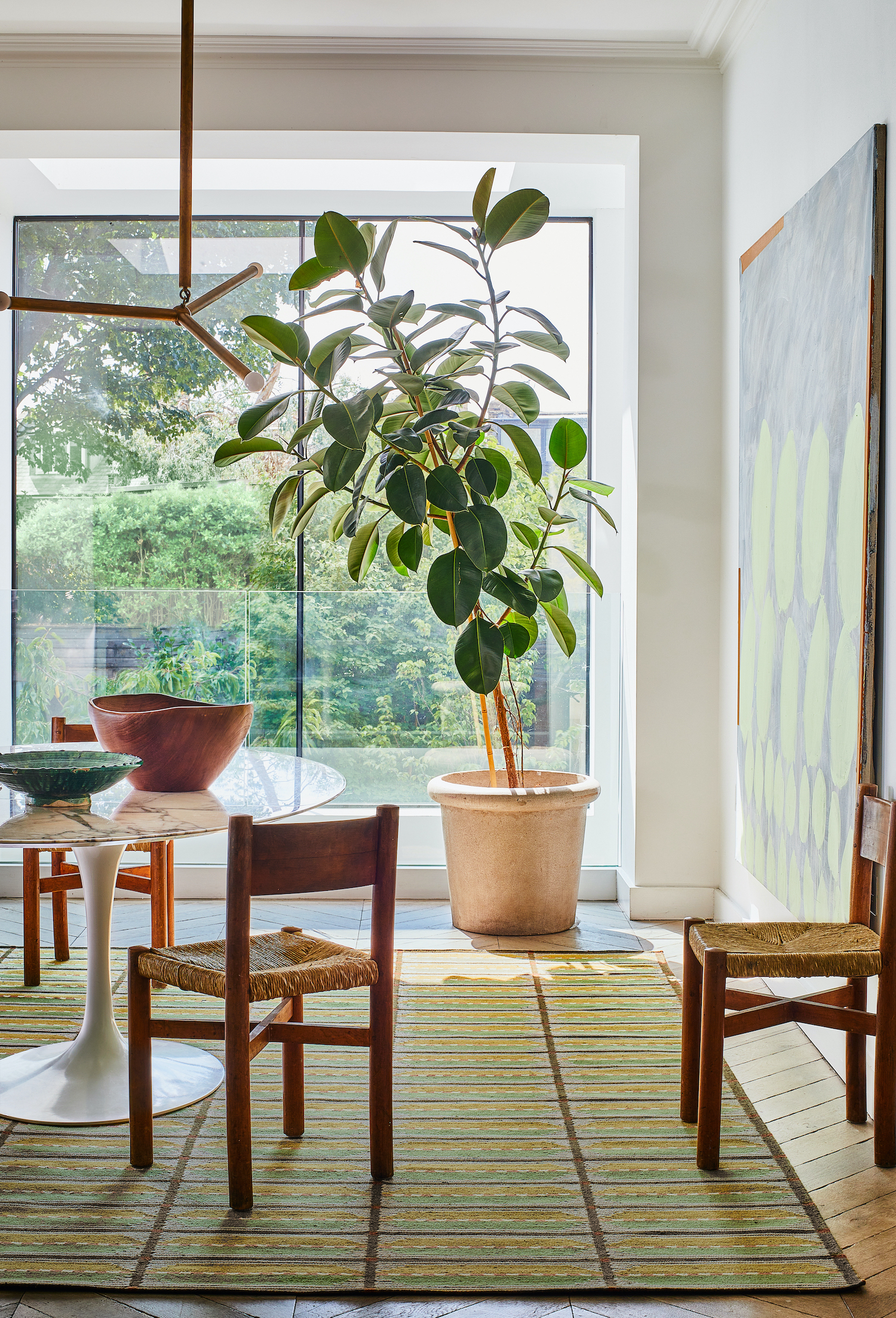
First up, the pros of putting a rug under the dining table. The first positive spin on a dining table rug is that it really anchors the space, creates a zone in the kitchen diner or dining area, and can nicely mirror the table under which it sits. 'A rug under a dining room table is an absolute must for this exact reason,' says interior designer Marie Flanagan of Marie Flanagan Interiors. 'Without a rug to anchor the space, a table and chairs can get lost in the room.'
'Like wall art and wall coverings, rugs help carve out a dining area within a home,' says Guillaume Coutheillas, founder and creative director of interior design agency, frenchCALIFORNIA. 'Rugs can be very powerful tools when working to anchor a space. We opt for rugs that frame the dining area, making it larger and clearly delineated from the rest of the home. For example, for the unit we designed in SELENE in New York City, we used larger rugs under each dining table, opening up the space while adding a new layer of texture and tone.'
'Putting a rug under a dining room table can be a great idea, particularly if it is an open plan space,' says Raphaël Le Berre for Le Berre Vevaud. 'A large rug helps to define and separate the dining area from the living area, while setting the distinct tones and colour palettes for those separate spaces. Matching those certain tones with accents of colour in furniture or ornamental pieces can in turn create a sense of harmony throughout the whole space.'
Unique loom outdoor striped rug from Kohls
A tasteful pattern made up from a mis-match stripe in neutral and green, made from polypropylene so it is stain resistant.

Aside from what a rug can do to visually zone the room and break up the space, rugs in the dining room also help to add visual softness and texture to the space, bringing the feel of a luxury dining room.
'A rug under the dining table creates an atmosphere in a room, especially under a wood floor it gives warmth to the room,' says Pierre Frey. 'Wool is a good option as it is very durable and washable.'
The Livingetc newsletters are your inside source for what’s shaping interiors now - and what’s next. Discover trend forecasts, smart style ideas, and curated shopping inspiration that brings design to life. Subscribe today and stay ahead of the curve.
'Carpet also helps to absorb the noise,' says designer Grey Joyner, 'so when you are all seated at the table, it doesn't seem like there is an echo.'
Another benefit of the underfoot texture is how the rug can help protect a hardwood floor underneath from scratches from chairs and table legs over the years - the texture provides a protective element that won't chip away your flooring.
Get the look with this faded, Persian style rug from Ruggable. The rug's pattern features a geometric medallion and blends a classic theme with a contemporary palette of cream and taupe.
What are the drawbacks of a rug under a dining room table?
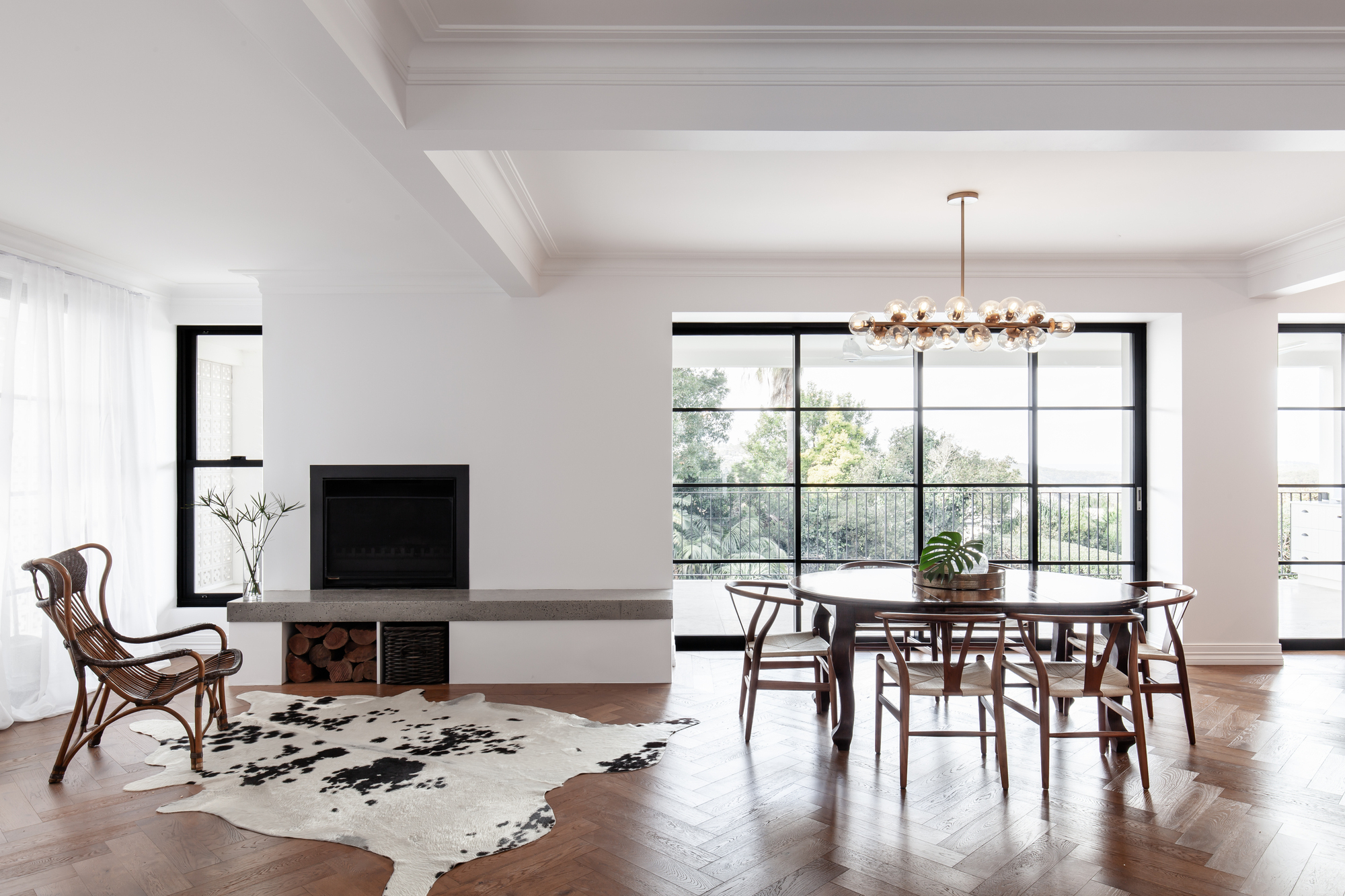
So what are the drawbacks? Designers are sometimes against putting a rug under a dining room table because of how messy the space can get. But this totally depends on what kind of home you have. A family space might be more prone to spillages from the dining room table - it is a functional space for eating and socializing after all, but others might be more suitable where the dining room is more of a formal set-up. When shopping for a rug, think about how the material will work in the space.
While the argument that the rug can protect the dining table floor is valid, also think about how your table and chair legs might damage the rug. This might stop you from going super expensive, or high pile style, as after years of pulling out chairs, the fabric will be sure to be trampled down. It also can make the movement of chairs difficult in itself and could cause you to trip up.
'I think rugs should be instead placed in an open area where their beauty and aesthetic are appreciated and seen,' says Ismail Kuden, owner of Kuden Rugs. 'Rugs under a dining table hide the rug's beauty and dim it.'
Sometimes, it's as simple as looking at the dining area's dimensions. Will it even allow for a large enough rug to fit? A smaller rug under a table will look incongruous and do damage to a cohesive interior.
What materials and shapes work well under the dining table?
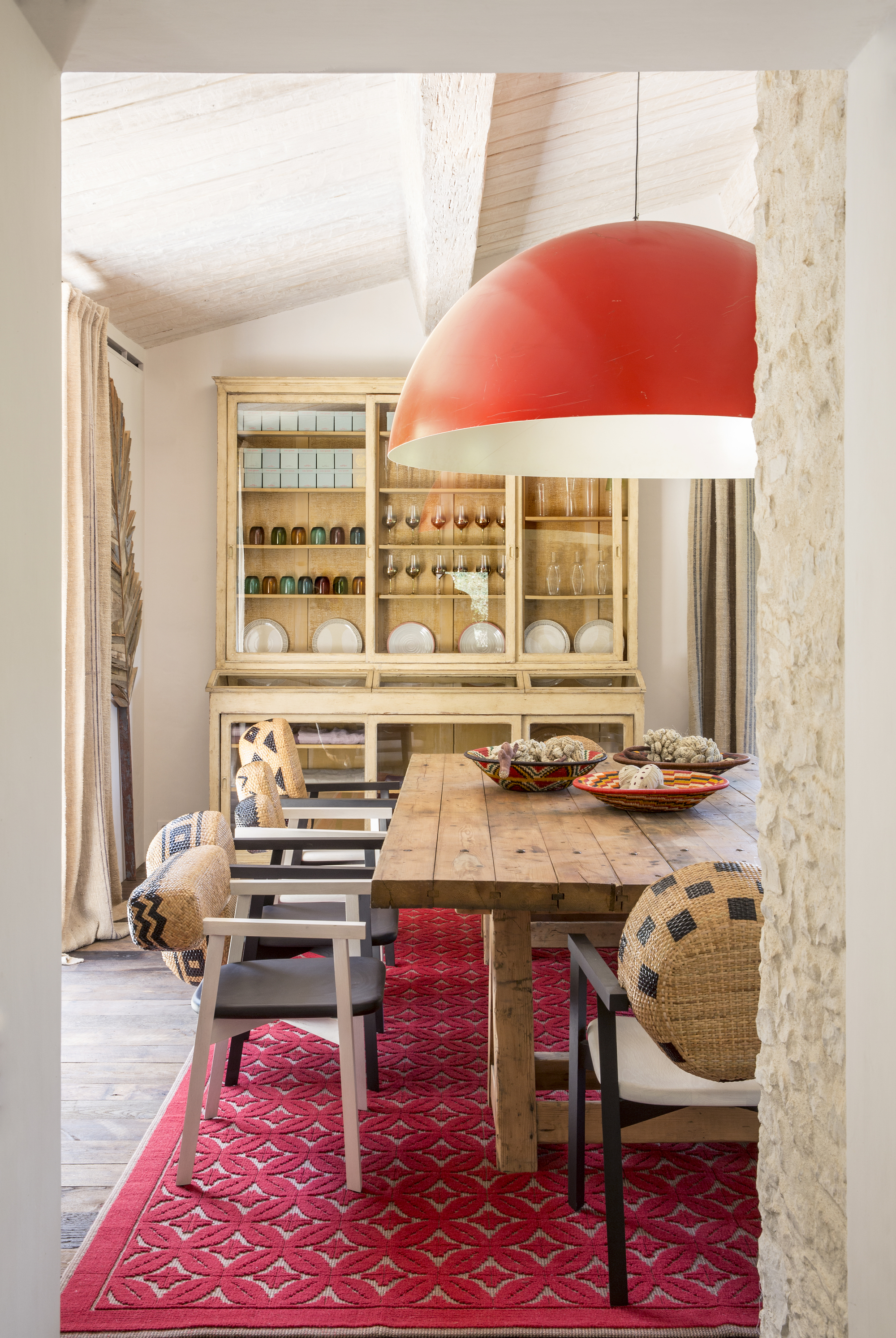
Ultimately, when it comes to how to choose the right dining room rug, it comes down to the material, size and shape.
Material-wise, you might want to think carefully about what type of living room you have. Is it a busy space frequented by family? Or is it a more formal dining area that is refined and elegant? Wool might be suitable for the latter, but likely to get damaged or spilled on in a family room. 'Try and choose a rug with lots of pattern or something that has some indoor/outdoor properties in the make up (either PET, or polypropylene),' says Grey. 'Or even just an easily cleanable material like a Nylon.
Sisals and jute hold up well under a dining table, and are good when it comes to camouflaging dirt, but they soak everything right up. Avoid high-pile rugs, which tend to trap food in between the fibers. A flatweave, low-pile rug is best, easy for your chairs to move back and forth over, and can be made out of synthetic material that can be easily chucked in the wash. Ruggable has good options for stain-proof, machine-washable pieces.
In terms of color, tread carefully. 'To mask soiling, we recommend either using quite saturated colors or when using a light color, to mix close shades to create a vibration in the surface instead of a flat color,' says Sarah Henry, managing director at La Manufacture Cogolin.
Aside from material, shape and size are also crucial. Try and pair shapes together. For example, the current dining table trend for round and oval tables would pair well with a larger rug, while a long rectangle table will look good with a larger rectangle rug framing from underneath. Just make sure your rug is a good deal larger than the table itself. As a rule of thumb, 'the chairs should sit comfortably on the rug when they are pulled out from the table, so the rug dimensions at a minimum should be the table dimensions plus the chair depth, plus 10-20cm minimum,' says Sarah. This gives enough space for your chair to comfortably slide out when pulling out chairs.
So should you put a rug under a dining table?
Yes, you can put a rug under your dining table, it nicely zones the space, can feel like an extra luxurious touch in your dining room, but be careful and sensible about what kind of material you use, and think carefully about shape and size. Make sure it mirrors the dining table above it, and don't pick a material that is going to wear away over time. Think washable rugs, or even outdoor rugs for a family home. Be sensible and get a rug pad to help anchor it to the floor and avoid it tripping you up and making it easier to clean.

Former content editor at Livingetc.com, Oonagh is an expert at spotting the interior trends that are making waves in the design world. She has written a mix of everything from home tours to news, long-form features to design idea pieces, as well as having frequently been featured in the monthly print magazine. She is the go-to for design advice in the home. Previously, she worked on a London property title, producing long-read interiors features, style pages and conducting interviews with a range of famous faces from the UK interiors scene, from Kit Kemp to Robert Kime. In doing so, she has developed a keen interest in London's historical architecture and the city's distinct tastemakers paving the way in the world of interiors.
